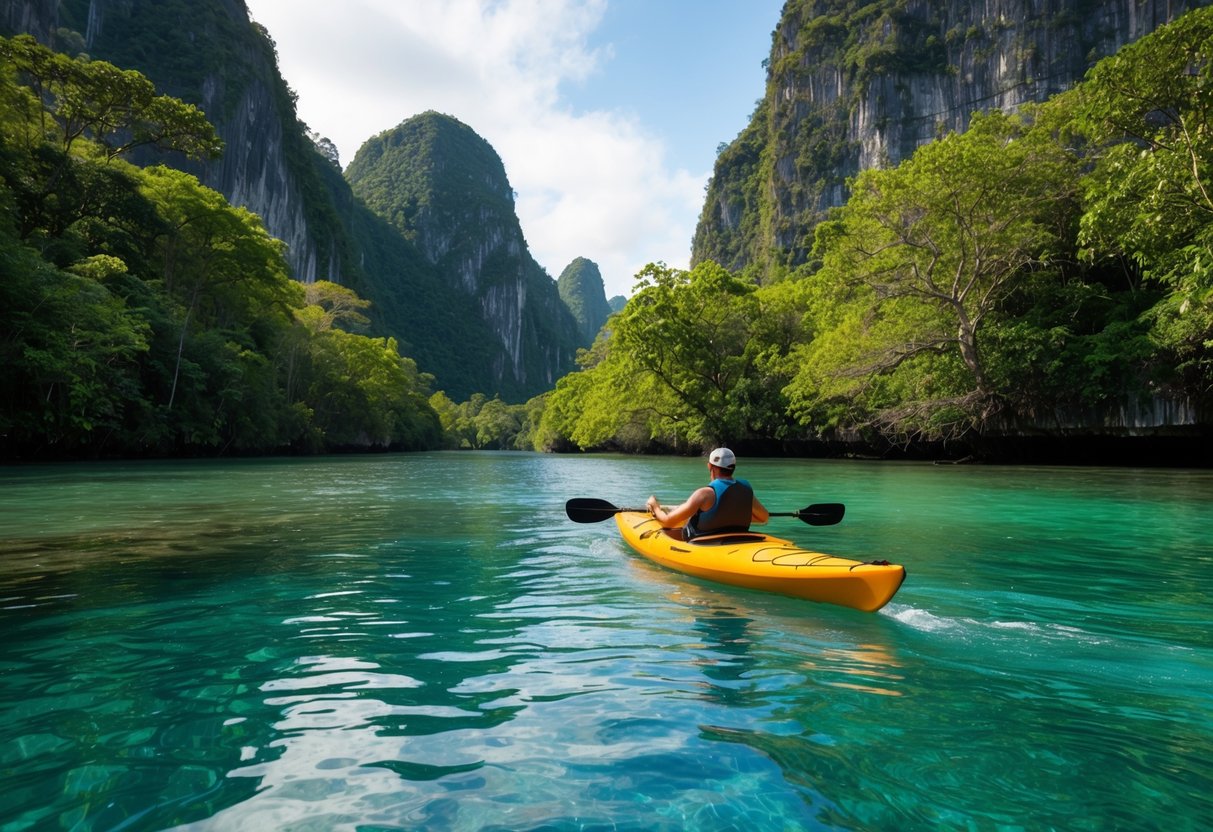
Planning Your Kayaking Adventure
Embarking on a kayaking journey in Thailand requires thoughtful preparation. Attention to essential gear, the choice of lodging, and reliable kayak rental services form the cornerstones of a successful trip.
What to Bring on Your Kayak Tour
Kayaking in Thailand demands specific gear to ensure both safety and comfort. Essential items include a lightweight, quick-drying towel for post-paddle freshness, and clothing suitable for warm, humid conditions. Waterproof bags are crucial for protecting valuables like phones and cameras from splashes. Snacks such as energy bars or dried fruit provide necessary sustenance during long paddling sessions. Lastly, always include a basic first aid kit, water, and sunscreen to protect against the tropical sun.
Choosing the Right Accommodation
Selecting the appropriate accommodation can greatly enhance the kayaking experience. Options range from luxurious beachfront resorts to more budget-friendly hostels, depending on personal preference and budget. Resorts often provide added conveniences such as easy beach access and on-site dining, while hostels offer a chance to connect with fellow travelers. Seek accommodations that offer kayak storage solutions and are located near popular kayaking spots to maximize time on the water.
Kayak Rental Options
In Thailand, various operators provide kayak rental services, offering everything from single kayaks to tandem models. It’s important to choose a provider known for maintaining their equipment in top condition. Verify that rental packages often include safety gear such as life jackets and paddles. Many experienced local guides offer tours that combine rental and guided services, providing insights into the best kayaking routes and hidden gems throughout Thailand’s waterways.
The Ecosystem of Mangrove Forests
Rich in biodiversity, mangrove forests provide unique opportunities for eco-tourism and wildlife observations. These adaptable ecosystems support a variety of plant and animal life across Thailand’s coastal regions. Exploring these areas offers a glimpse into the complex interactions between species that thrive in this environment.
Exploring the Richness of Mangroves
Mangrove forests are characterized by their dense root systems, which help stabilize coastlines and reduce erosion. They thrive in salty and freshwater environments, supporting a wide range of plants that can tolerate these conditions. In Thailand, visitors will find diverse tree species displaying vibrant greenery. This ecosystem acts as a natural nursery, supporting juvenile fish and invertebrates, maintaining the balance of marine life. The mangroves’ nutrient-rich waters foster a haven for numerous species, indirectly sustaining the livelihood of local fishing communities. Tourists are often captivated by the interwoven roots and lush foliage that creates a picturesque setting, ideal for leisurely kayaking.
Wildlife Spotting Amongst the Mangroves
Kayakers navigating through mangrove forests can encounter a variety of wildlife, making it a prime spot for wildlife sightings. Mangrove ecosystems are home to diverse species such as crabs, shrimp, and mollusks, with birds like herons and kingfishers frequenting the area. Wildlife enthusiasts can observe these creatures in their natural habitats, with rare opportunities to see animals like monkeys and monitor lizards. These forests play a pivotal role in the food chain, supporting both aquatic and terrestrial animals. This biodiversity supports comprehensive eco-tourism experiences, where guides often share knowledge on local flora and fauna. Such experiences offer invaluable insights into the delicate balance maintained within mangrove ecosystems.